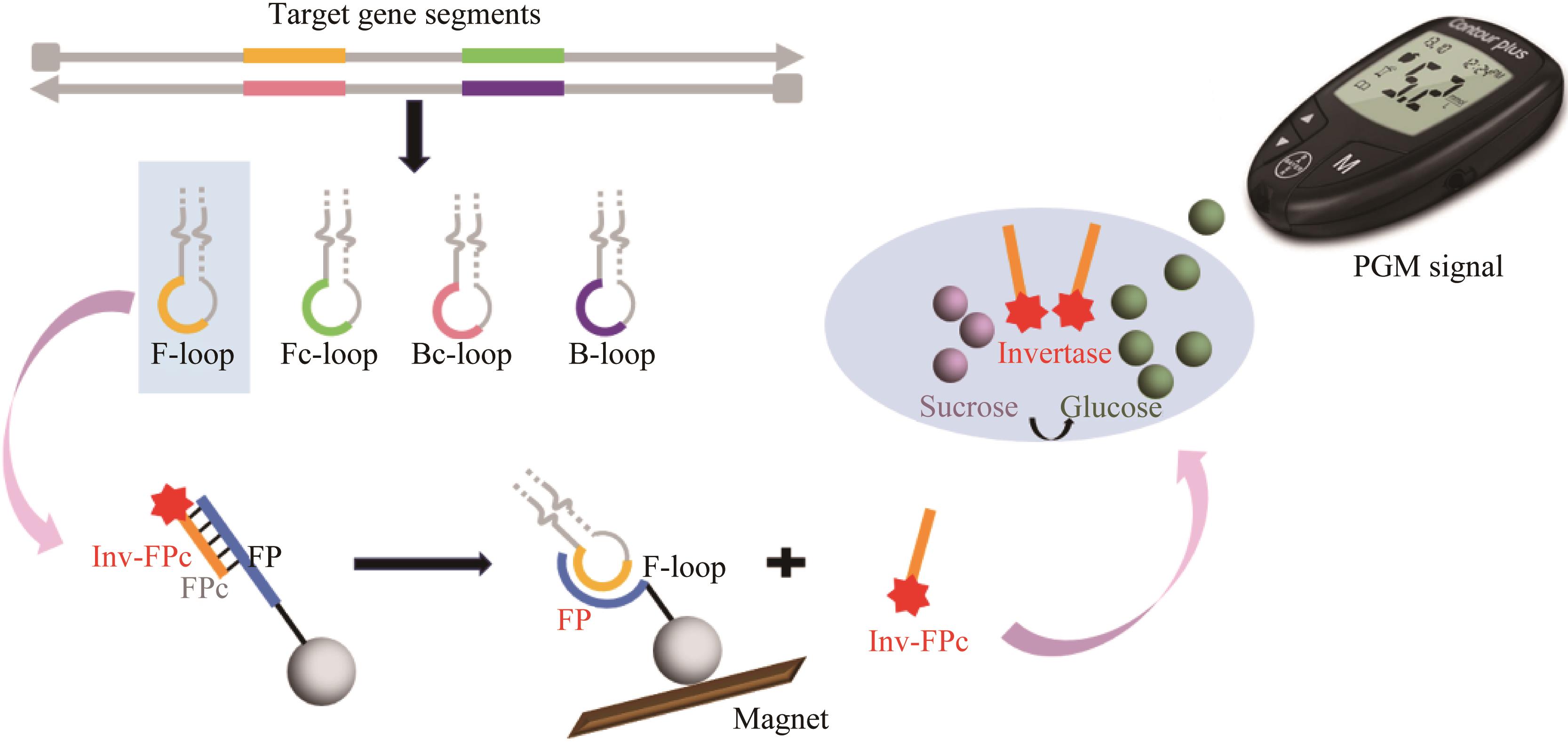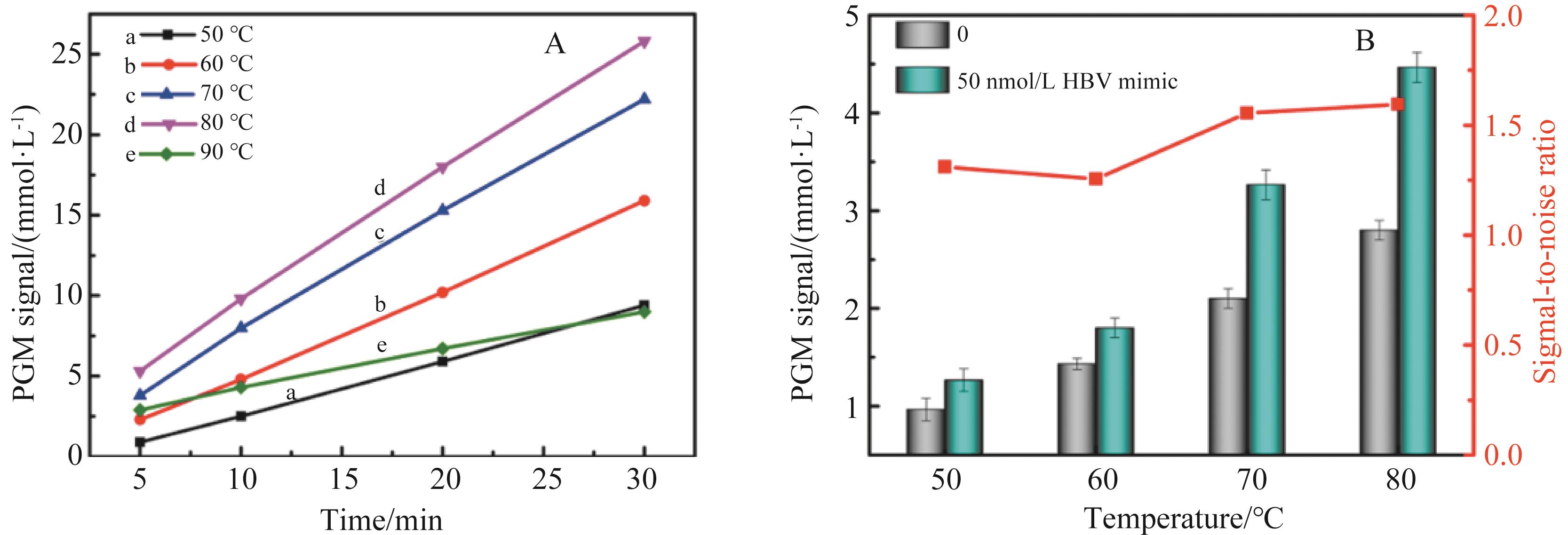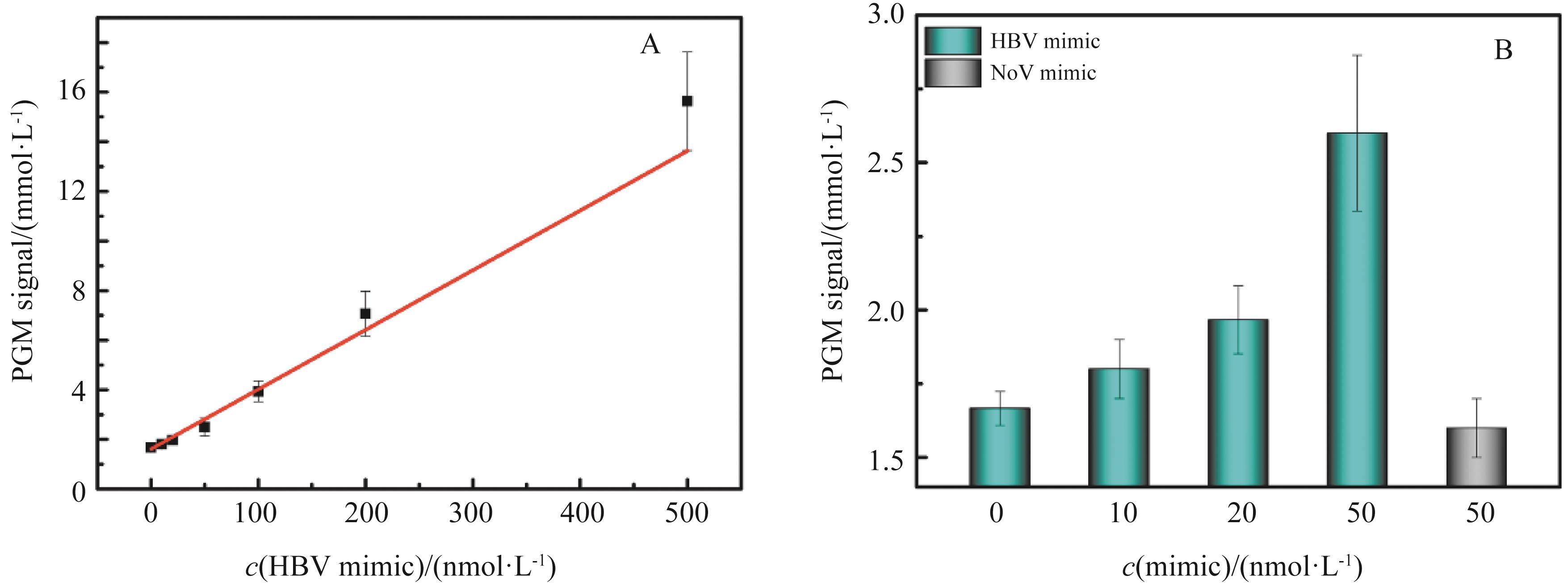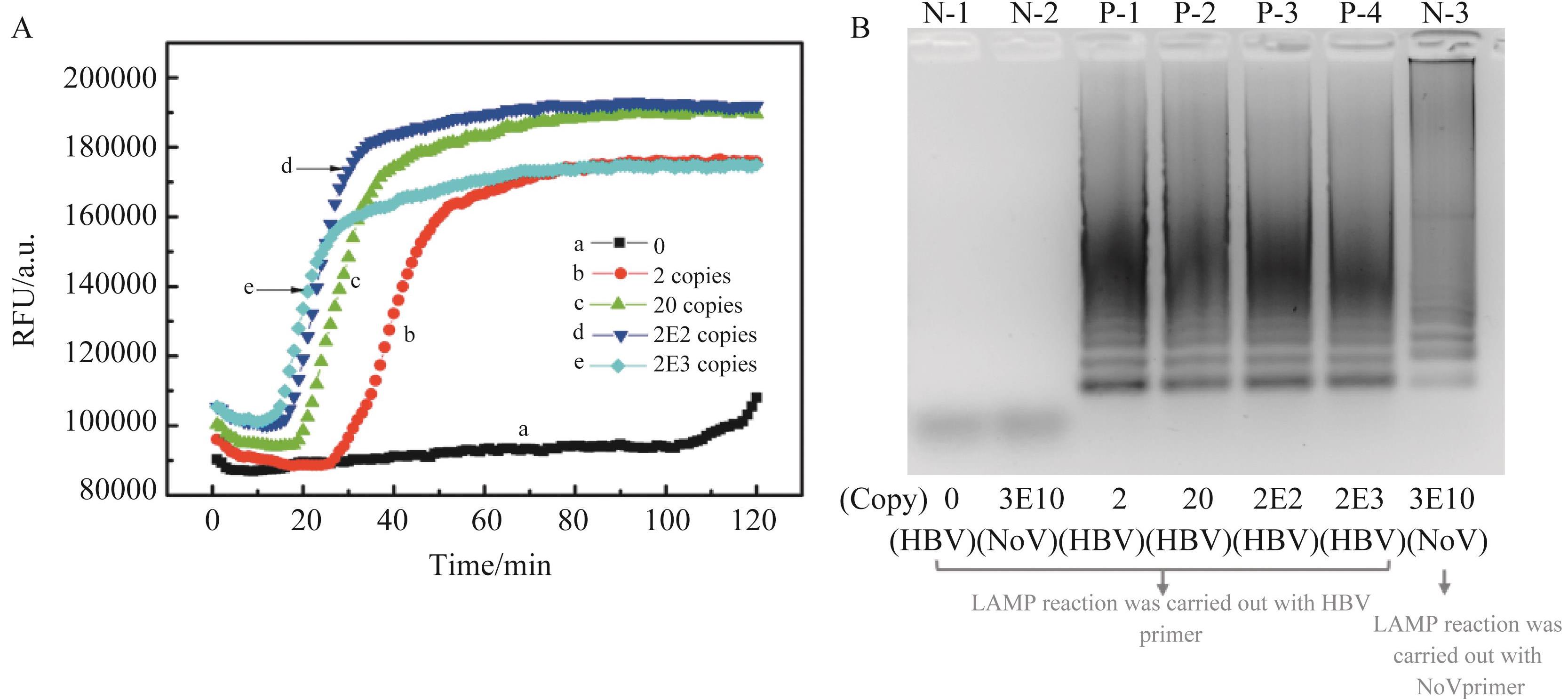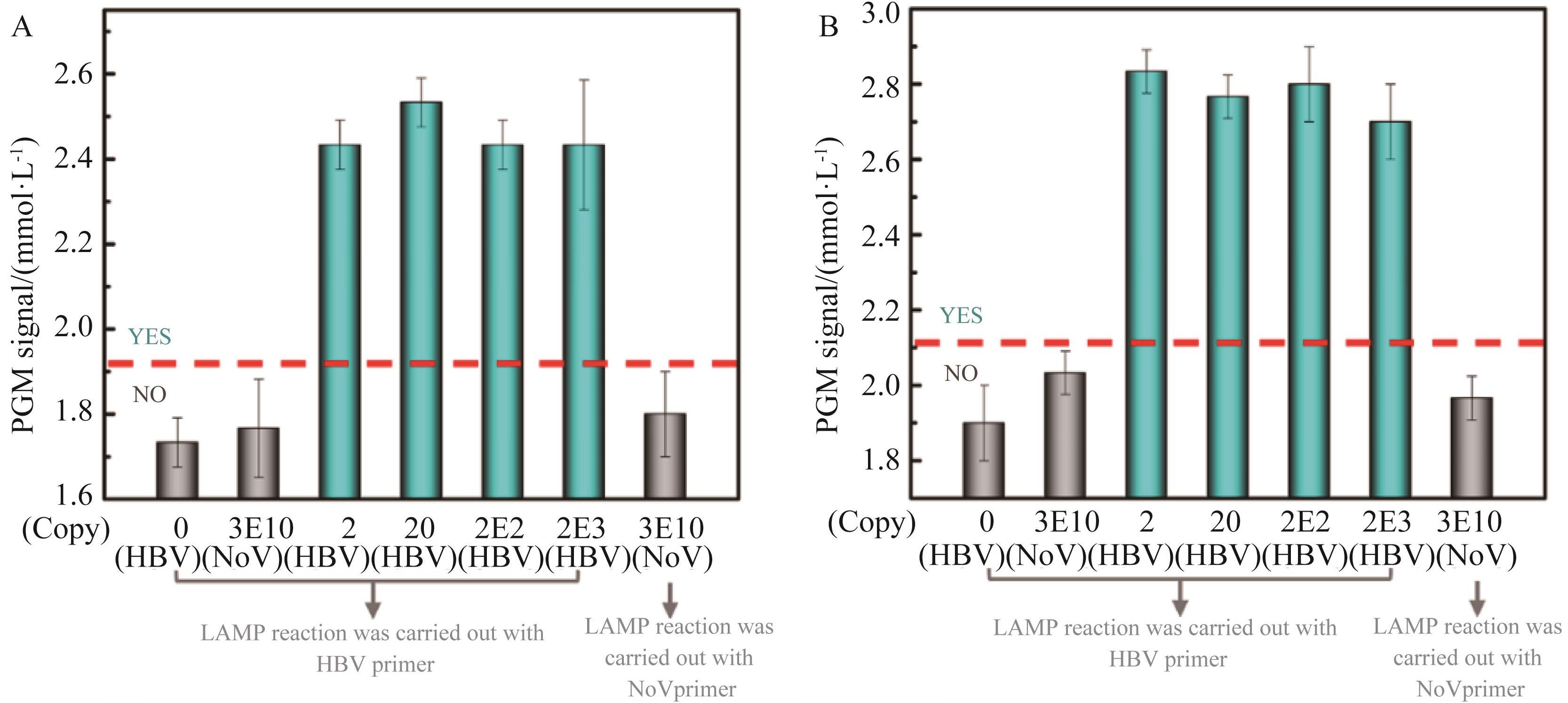| 1 |
XIAO Y, THOMPSON A J, HOWELL J. Point-of-Care Tests for hepatitis B: an overview[J]. Cells, 2020, 9(10): 2233.
|
| 2 |
FU Y, WU S, HU Y, et al. Mutational characterization of HBV reverse transcriptase gene and the genotype-phenotype correlation of antiviral resistance among Chinese chronic hepatitis B patients[J]. Emerg Microbes Infect, 2020, 9(1): 2381-2393.
|
| 3 |
GUPTA N, GOYAL M, WU C H, et al. The molecular and tructural basis of HBV-resistance to nucleos(t)ide analogs[J]. J Clin Transl Hepatol, 2014, 2(3): 202-211.
|
| 4 |
GOU L, SHENG Y, PENG Q, et al. Ternary nanocube-based “off-on” blinking-type electrochemiluminescence towards enzyme-free detection of hepatitis B virus (HBV)-related DNA[J]. Sens Actuators B, 2020, 312: 127987.
|
| 5 |
MISKA S, GUNTHER S, VASSILEV M, et al. Heterogeneity of hepatitis B virus C-gene sequences: implications for amplification and sequencing[J]. J Hepatol, 1993, 18(1): 53-61.
|
| 6 |
李琳, 钱四化, 吕天琦, 等. 新一代测序技术的文库制备方法研究进展[J]. 应用化学. 2021, 38(1): 11-23.
|
|
LI L, QIAN S H, LYU T Q, et al. Recent progress of library construction for next-generation sequencing[J]. Chinese J Appl Chem, 2021, 38(1): 11-23.
|
| 7 |
AHANGAR L E, MEHRGARDI M A. Amplified detection of hepatitis B virus using an electrochemical DNA biosensor on a nanoporous gold platform[J]. Bioelectrochemistry, 2017, 117: 83-88.
|
| 8 |
LU Y, LIN Y, ZHENG Z, et al. Label free hepatitis B detection based on serum derivative surface enhanced Raman spectroscopy combined with multivariate analysis[J]. Biomed Opt Express, 2018, 9(10): 4755-4766.
|
| 9 |
VILLIERS M B, CORTAY J C, CORTES S, et al. Protein-peptide arrays for detection of specific anti-hepatitis D virus (HDV) genotype 1, 6, and 8 antibodies among HDV-infected patients by surface plasmon resonance imaging[J]. J Clin Microbiol, 2015, 53(4): 1164-1171.
|
| 10 |
TSAI H F, HSIAO H H. Synthesis of stable isotopically labeled peptides with filter-assisted enzymatic labeling for the diagnosis of hepatitis B virus infection utilizing mass spectrometry-based proteomics strategy[J]. Anal Chim Acta, 2017, 956: 32-39.
|
| 11 |
JIN F, LI H, XU D. Enzyme-free fluorescence microarray for determination of hepatitis B virus DNA based on silver nanoparticle aggregates-assisted signal amplification[J]. Anal Chim Acta, 2019, 1077: 297-304.
|
| 12 |
黄子珂, 刘超, 付强强, 等. 核酸适配体荧光探针在生化分析和生物成像中的研究进展[J]. 应用化学, 2018, 35(1): 28-39.
|
|
HUANG Z K, LIU C, FU Q Q, et al. Aptamer-based fluorescence probe for bioanalysis and bioimaging[J]. Chinese J Appl Chem, 2018, 35(1): 28-39.
|
| 13 |
刘传银, 胡继明. 亲和型生物传感器在生物医学上的应用进展[J]. 应用化学. 2011, 28(6): 611-623.
|
|
LIU C Y, HU J M. Recent advance of affinitive biosensors in biomedical applications[J]. Chinese J Appl Chem, 2011, 28(6): 611-623.
|
| 14 |
SHI Y, JIANG Z, YANG Y, et al. Clonorchis sinensis infection and co-infection with the hepatitis B virus are important factors associated with cholangiocarcinoma and hepatocellular carcinoma[J]. Parasitol Res, 2017, 116(10): 2645-2649.
|
| 15 |
马德章, 刁昱文, 杨佳新, 等. 双抗夹心ELISA法测定水资源、食品及饲料中总甾体激素含量[J]. 应用化学, 2010, 27(12): 1466-1469.
|
|
MA D Z, DIAO Y W, YANG J X, et al. ELISA detection of steroidal hormones in water resources, foods and feed[J]. Chinese J Appl Chem, 2010, 27(12): 1466-1469.
|
| 16 |
ZHAO W, ALI M M, BROOK M A, et al. Rolling circle amplification: applications in nanotechnology and biodetection with functional nucleic acids[J]. Angew Chem Int Ed, 2008, 47(34): 6330-6337.
|
| 17 |
TANG Y, LI H, LI B. Homogeneous and universal transduction of various nucleic acids to an off-shelf device based on programmable toehold switch sensing[J]. Chem Commun, 2020, 56(16): 2483-2486.
|
| 18 |
KURN N, CHEN P, HEATH J D, et al. Novel isothermal, linear nucleic acid amplification systems for highly multiplexed applications[J]. Clin Chem, 2005, 51(10): 1973-1981.
|
| 19 |
ZHOU Y L, LI B C, WANG M H, et al. Fluorometric determination of microRNA based on strand displacement amplification and rolling circle amplification[J]. Microchim Acta, 2017, 184(11): 4359-4365.
|
| 20 |
KIVLEHAN F, MAVRE F, TALINI L, et al. Real-time electrochemical monitoring of isothermal helicase-dependent amplification of nucleic acids[J]. Analyst, 2011, 136(18): 3635-3642.
|
| 21 |
ROSSER A, ROLLINSON D, FORREST M, et al. Isothermal recombinase polymerase amplification (RPA) of Schistosoma haematobium DNA and oligochromatographic lateral flow detection[J]. Parasit Vectors, 2015, 8: 446.
|
| 22 |
DEL RIO J S, LOBATO I M, MAYBORODA O, et al. Enhanced solid-phase recombinase polymerase amplification and electrochemical detection[J]. Anal Bioanal Chem, 2017, 409(12): 3261-3269.
|
| 23 |
ABDUL-GHANI R, AL-MEKHLAFI A M, KARANIS P. Loop-mediated isothermal amplification (LAMP) for malarial parasites of humans: would it come to clinical reality as a point-of-care test?[J]. Acta Trop, 2012, 122(3): 233-240.
|
| 24 |
XIE S, TANG Y, TANG D. Converting pyrophosphate generated during loop mediated isothermal amplification to ATP: application to electrochemical detection of Nosema bombycis genomic DNA PTP1[J]. Biosens Bioelectron, 2018, 102: 518-524.
|
| 25 |
NOTOMI T, OKAYAMA H, MASUBUCHI H, et al. Loop-mediated isothermal amplification of DNA[J]. Nucleic Acids Res, 2000, 28(12): E63.
|
| 26 |
DONG Q, LIU Q, GUO L, et al. A signal-flexible gene diagnostic strategy coupling loop-mediated isothermal amplification with hybridization chain reaction[J]. Anal Chim Acta, 2019, 1079: 171-179.
|
| 27 |
WANG Q, WANG H, YANG X H, et al. Multiplex detection of nucleic acids using a low cost microfluidic chip and a personal glucose meter at the point-of-care[J]. Chem Commun (Camb), 2014, 50(29): 3824-3826.
|
| 28 |
DU Y, HUGHES R A, BHADRA S, et al. A Sweet spot for molecular diagnostics: coupling isothermal amplification and strand exchange circuits to Glucometers[J]. Sci Rep, 2015, 5: 11039.
|
| 29 |
LIU J, MAZUMDAR D, LU Y. A Simple and sensitive “dipstick” test in serum based on lateral flow separation of aptamer-linked nanostructures[J]. Angew Chem Int Ed, 2006, 118(47): 8123-8127.
|
| 30 |
ZHANG J, XING H, LU Y. Translating molecular detections into a simple temperature test using a target-responsive smart thermometer[J]. Chem Sci, 2018, 9(16): 3906-3910.
|
| 31 |
DU Y, POTHUKUCHY A, GOLLIHAR J D, et al. Coupling sensitive nucleic acid amplification with commercial pregnancy test strips[J]. Angew Chem Int Ed, 2017, 56(4): 992-996.
|
| 32 |
ZHANG Y, MA C B, YANG M T, et al. Point-of-care testing of various analytes by means of a one-step competitive displacement reaction and pregnancy test strips[J]. Sens Actuators B, 2019, 288: 163-170.
|
| 33 |
XIANG Y, LU Y. Using personal glucose meters and functional DNA sensors to quantify a variety of analytical targets[J]. Nat Chem, 2011, 3(9): 697-703.
|

 ), Chang LIU1(
), Chang LIU1( )
)
